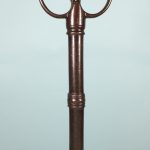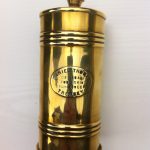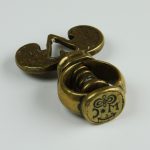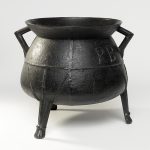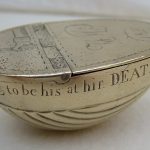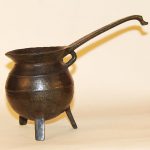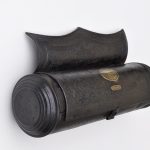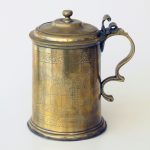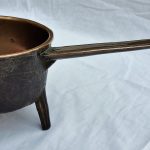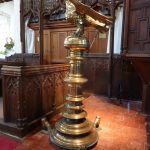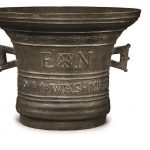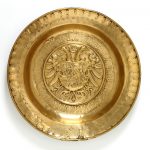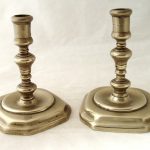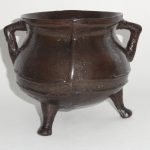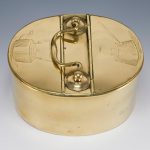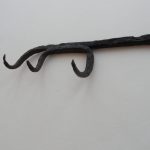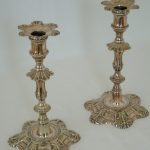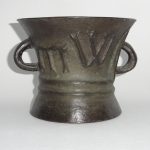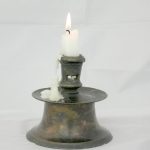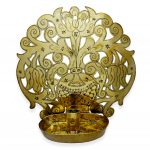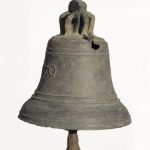Early Electroplate Candle Snuffers
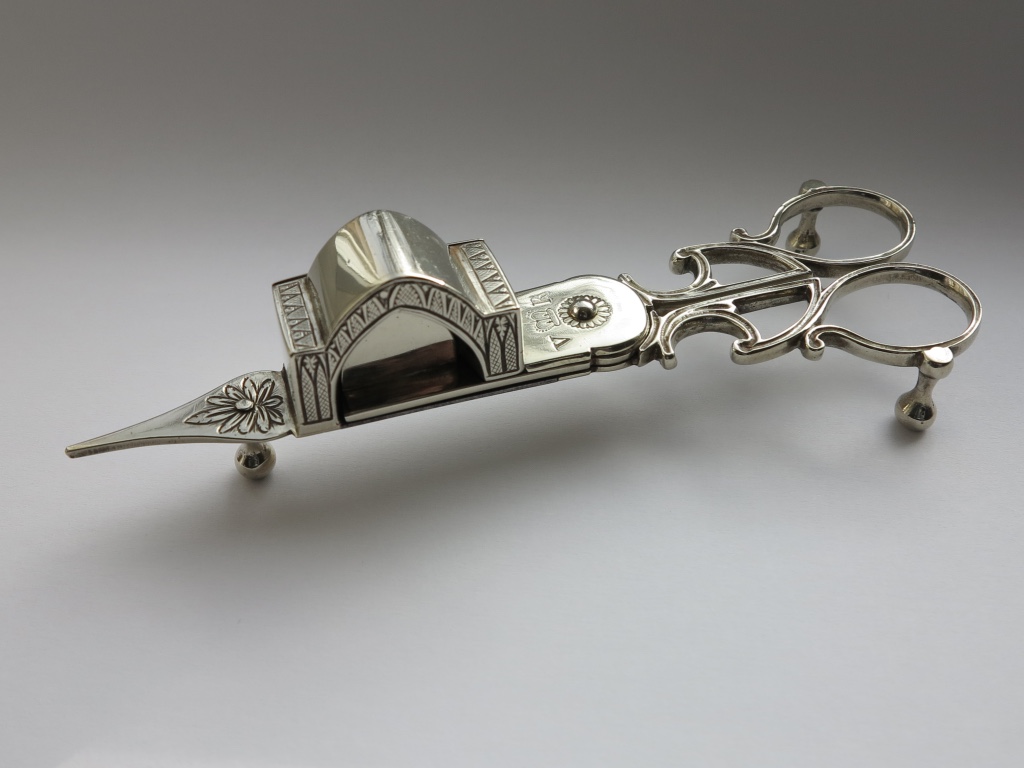
Explanation:
For much of the 18th and 19th centuries the candle snuffer was an essential tool for all but the poorest households. The use of tallow for making candles created a continual need to trim off the partly-burned end of the wick, both to improve the light given out and to reduce smoke and smell, while the candle remained burning. Much ingenuity was shown in developing and patenting improvements in snuffer design. As a result of designs patented by him in 1810 and 1818, the name of Samuel Hobday appears on many pairs of snuffers. His designs cut through the increasing complexity of other designs, by dispensing first with the use of springs, and then with levers also. Their simplicity has contributed to their survival and they are common even today. This pair is a further development.
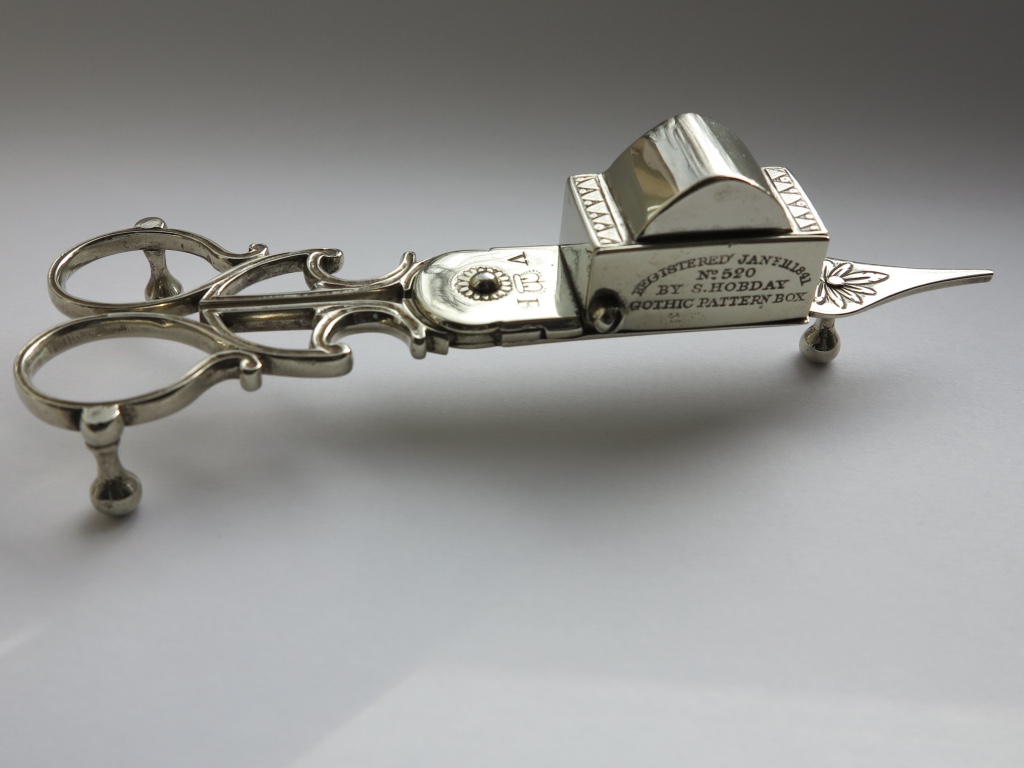
On the side of the wick box that pivots open to empty the wick trimmings, is a stamped Registered Design number 520 and the date January 1841. This is a very late date for a design for snuffers, which would shortly be made redundant by improvements in candle manufacture. However, it is early for a Registered Design, and even earlier for the use of EPNS, which was only then starting to be produced in Birmingham by Elkington.
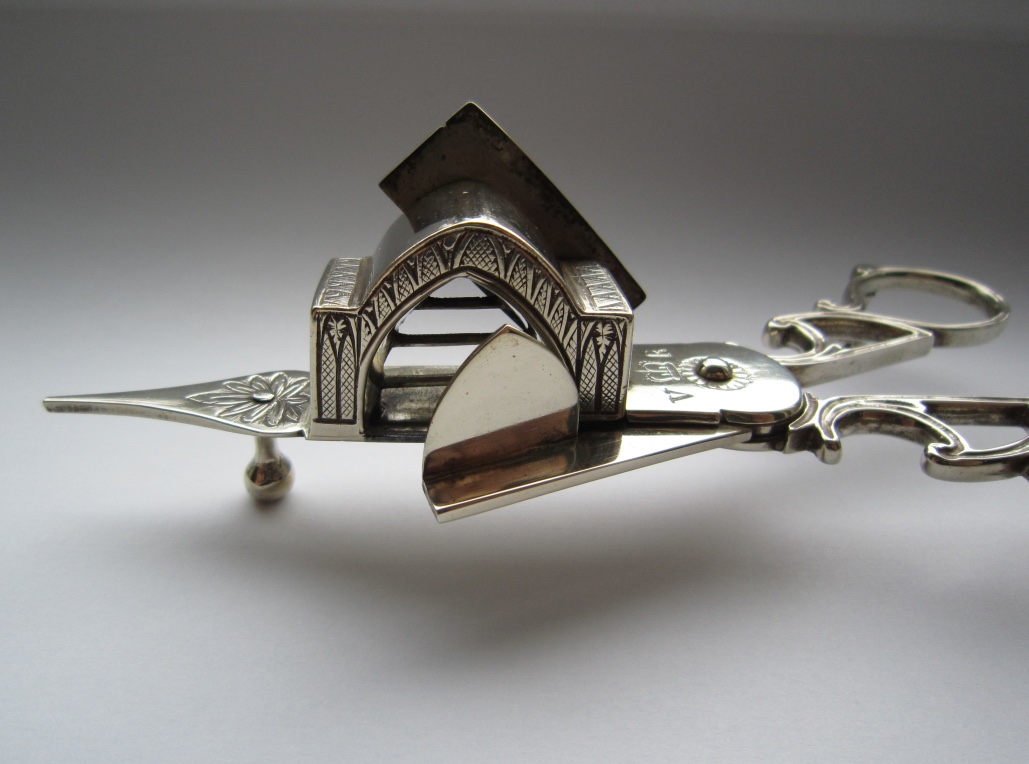
The mechanism of this model continues the avoidance of springs and levers, and includes within the box a grille to catch and retain the wick trimmings. The design is an example of the highly fashionable Gothic Revival style.

